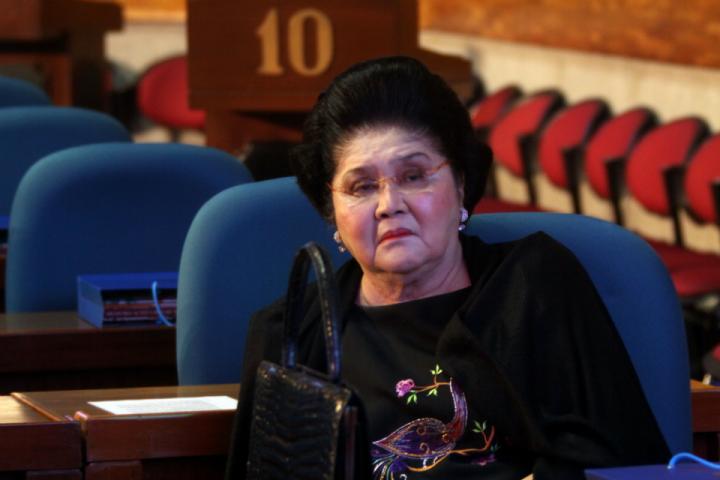
The government lost a nearly 30-year-long battle to recover several properties, including 67 pieces of land, allegedly purchased by the brothers of former First Lady and now Ilocos Norte Rep. Imelda Romualdez Marcos.
This was after the Sandiganbayan dismissed the civil forfeiture case against Marcos’ brothers — Armando and Alfredo Romualdez.
ALSO READ: THE HIDDEN TRUTH, MARCOS CASES ACQUITTED
In a decision promulgated on August 15, a copy of which was obtained by the media Wednesday, the anti-graft court’s First Division granted the demurrer of evidence filed by Alfredo, Armando and his spouse Vilma.
A demurrer to evidence seeks the dismissal of the case halfway through the trial based solely on the evidence presented by the prosecution.
The subject of the forfeiture case were 67 pieces of real property located in various areas nationwide, as well as personal property composed of various shares of stock in different companies, bank accounts, vehicles, aircrafts, racehorse, and livestock.
In a 76-page ruling, the Sandiganbayan said the government “miserably failed” to prove that the Romualdezes acquired the properties using government resources and obtained them because of their close relationship with the late President Ferdinand Marcos, their sister’s spouse.
“[O]wnership of the properties and relations of the Romualdezes to President Marcos alone do not make these properties ill-gotten, especially considering that the Republic did not substantiate with concrete evidence abuse of power or authority on the part of the Romualdezes,” the court said.
The Presidential Commission on Good Government (PCGG), through the Office of the Solicitor General, filed the forfeiture case against the Romualdezes in 1987 to recover the properties which were allegedly acquired by the Romualdezes through illegal means.
The PCGG accused the Romualdezes of allegedly conspiring with each other to create dummy corporations— Golden Country Farms Inc (GCFI)., Highway Builders Inc., Dipudo Industries Inc., Maconacon Airways Inc., and Isabela Gas and Power Develoment Corporation.
These companies were allegedly used to siphon funds from the government coffers in the guise of a lone from different financial institutions such as the Development Bank of the Philippines and the National Investment Development Corp., and credit accommodations from the National Grains Authority.
The monies obtained were then supposedly used for the acquisition of the properties.
The government argued that the assets acquired by the Romualdez brothers should be returned to the Filipino people since they were allegedly ill-gotten.
To support its case, the PCGG presented 25 witnesses and about 400 documentary exhibits from the time the complaint was filed in 1987 up until it submitted its amended formal offer of evidence in 2015.
However, even with the voluminous evidence presented by the government, the Romualdezes said the case against them should be dismissed as the PCGG failed to prove the subject assets came from the government itself or were acquired through illegal means.
In deciding to dismiss the case, the Sandiganbayan took issue with the documentary exhibits presented by the government to prove that GCFI was a dummy company with links to the late President Marcos since majority of them were photocopies.
It said that under the “best evidence rule,” a party which desires to present photocopies of the original document must first prove the following elements before the secondary evidence is admitted by the court:
- the existence or due execution of the original;
- the loss and destruction of the original or the reason for its non-production in court; and
- the absence of bad faith on the part of the offeror to which the unavailability of the original can be attributed.
The Sandiganbayan said the government failed to support the acceptability of its secondary evidence and instead proceeded with the presentation and identification of the photocopied documents without explaining why the original documents could not be produced in court.
“What is only obvious to the Court is that the documents passed or were transferred from one office to another and kept by the designated custodians but it is unclear if the documents that were turned over to these offices were originals,” the ruling read.
The Sandiganbayan said the government likewise failed to comply with the requirements for the authentication of private documents, which formed bulk of its documentary evidence.
While the court said the circumstances “directly and positively linking” former President Marcos to the GCFI can be gleaned from the private documents such as letters, reports and memorandum presented by the government, it failed to establish their evidentiary worth.
As such, the Sandiganbayan said “there is no competent evdence showing the GCFI was a dummy corporation of former President Marcos.”
The court said the four other corporations mentioned by the PCGG also depend “on the same incompetent evidence,” although prosecutors did not present as much documents about them compared with GCFI.
The late President Marcos and his wife were also named defendants in the case although they were declared in default due to their failure to file their answer within 60 days from Nov. 10, 1988, when the alias summonses were served upon them.
Another defendant, Ricardo Quintos, was subsequently declared in default while the other one, Nelia Gonzales, filed her answer but did not participate in subsequent proceedings.
ALSO READ: THE HIDDEN TRUTH, MARCOS CASES ACQUITTED
(excerpt from source) VVP, GMA News

